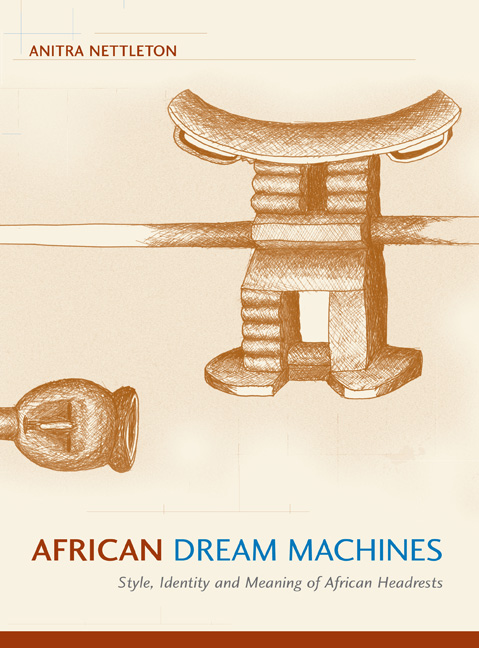Book contents
- Frontmatter
- Contents
- Preface
- Acknowledgements
- Notes on the Use of African Ethnic Names and Country and Place Names
- References to Illustrations in the Text and Notes on Illustrations
- Chapter 1 Headrests and Art
- Chapter 2 A Matter of Style, or, Why Style Matters
- Chapter 3 Methodology, Position and Limitations
- Chapter 4 The Geographical and Chronological Distribution of the Columned Headrest
- Chapter 5 Authenticity and History
- Chapter 6 East African Headrests: Identity, Form and Aesthetics
- Chapter 7 Tracing Histories: Central and Southern African Connections
- Chapter 8 Not Just a Curious Beauty: The Anatomy of Meaning in Useful Objects
- Notes to Chapters
- Bibliography
- List of Illustrations
- Index
Chapter 3 - Methodology, Position and Limitations
Published online by Cambridge University Press: 18 May 2019
- Frontmatter
- Contents
- Preface
- Acknowledgements
- Notes on the Use of African Ethnic Names and Country and Place Names
- References to Illustrations in the Text and Notes on Illustrations
- Chapter 1 Headrests and Art
- Chapter 2 A Matter of Style, or, Why Style Matters
- Chapter 3 Methodology, Position and Limitations
- Chapter 4 The Geographical and Chronological Distribution of the Columned Headrest
- Chapter 5 Authenticity and History
- Chapter 6 East African Headrests: Identity, Form and Aesthetics
- Chapter 7 Tracing Histories: Central and Southern African Connections
- Chapter 8 Not Just a Curious Beauty: The Anatomy of Meaning in Useful Objects
- Notes to Chapters
- Bibliography
- List of Illustrations
- Index
Summary
NOTWITHSTANDING KASFIR's DOUBTS about the value of the study of object types (Kasfir 1984), this study chooses to continue an earlier approach to the study of African headrests as object types. Because headrests are so widely distributed in Africa, they slip, for the large part, between the cracks of conventional art-historical enquiry. The lack of overtly figurative elements in most African headrests allows their stylistic features to be articulated easily, both in terms of functional/technical considerations and in terms of aesthetic dimensions divorced from notions of representation; i.e. they transcend the narratives of iconographic studies and enter into different kinds of textual formations. And, because they were not necessarily always produced by skilled carvers, they can be shown to transgress the limits set to stylistic analysis by the notion of the mastery of specific modes of representation, linked either to specific ethnic categories or to particular artists and ateliers.
The contention underlying the analyses that follow in the next four chapters is that headrests made in Africa may be categorised morphologically into distinct types that are differentially distributed across the geographical areas of Southern, Central and East Africa, with a significantly small number recorded from West Africa. Using an analysis of headrest forms, from those that have a single column or multiple columns as their supporting element to those that are horizontally oriented with multiple legs, the study traces a distribution of headrest types that does not rely on ethnic or tribal categories as its primary organisational principle, and thereby destabilises the idea that spoken or verbal language is at the core of visual stylistic difference. From this it should be possible to establish whether there are formal types that are confined to particular ethnic groups, or to find those instances where particular ethnic groups have managed to establish a peculiar stylistic identity within the broad formal type that separates them from others of the same type.
On the one hand, headrests constitute a visible manifestation, a concrete statement and a knowledge statement, which, following Foucault (1972:39), can be used to map distributions, differences and interrelations. But, on the other hand, each headrest is the product of an individual maker and an individual user, and, in some instances, of the first user's descendants and legitimate local or colonial heirs.
- Type
- Chapter
- Information
- African Dream MachinesStyle, Identity and Meaning of African Headrests, pp. 59 - 68Publisher: Wits University PressPrint publication year: 2007



